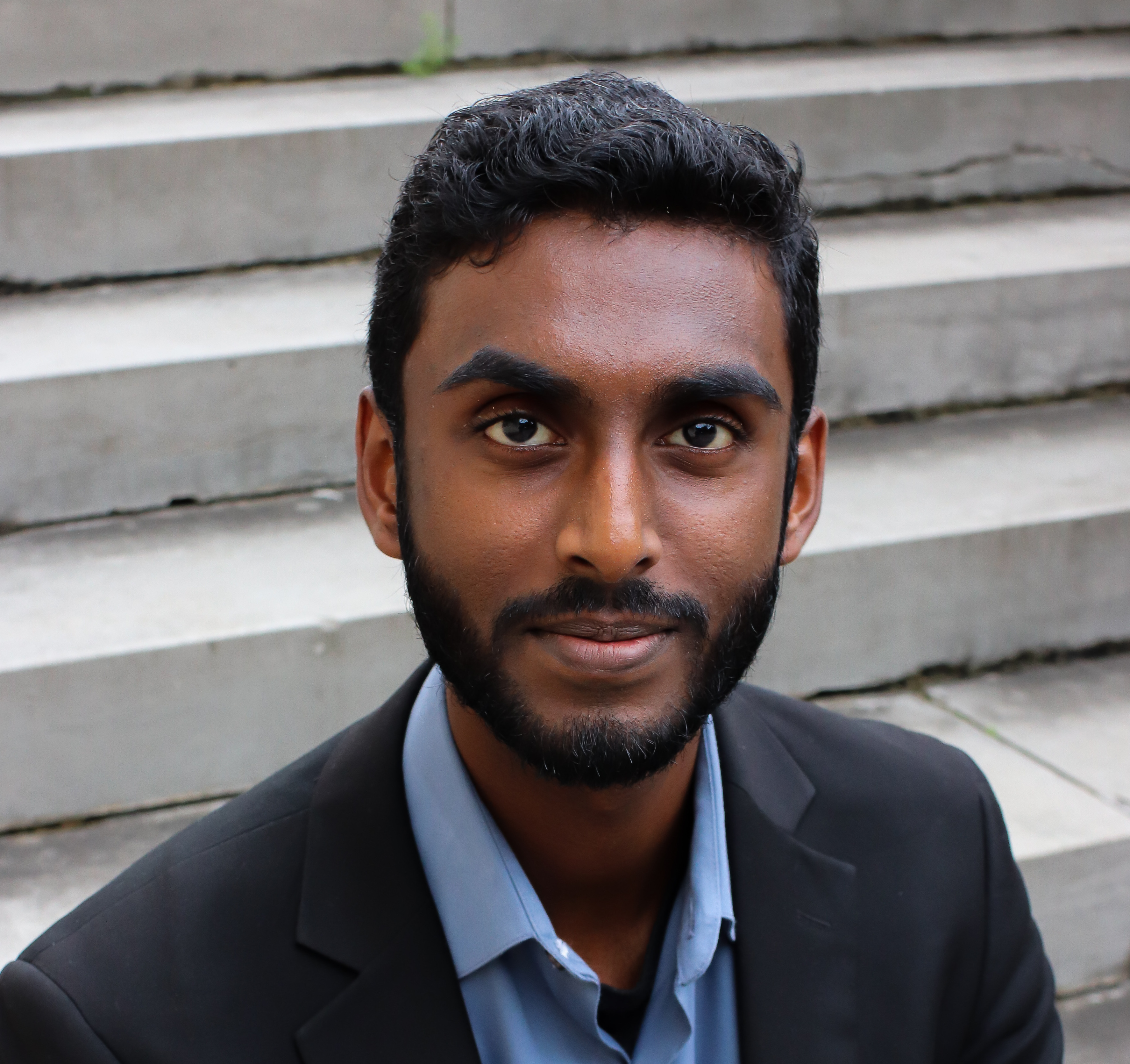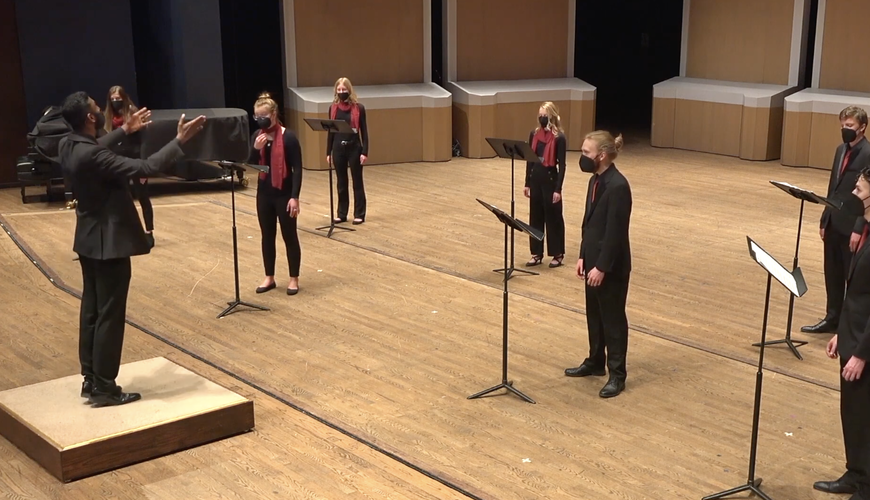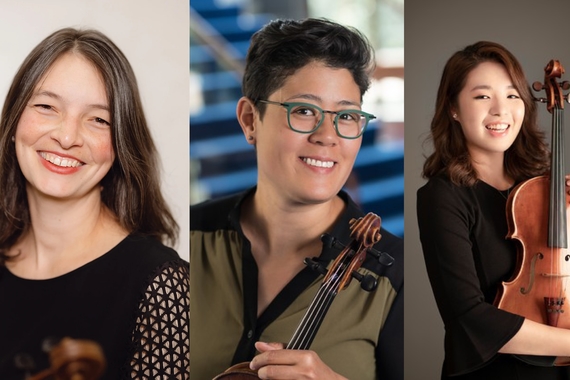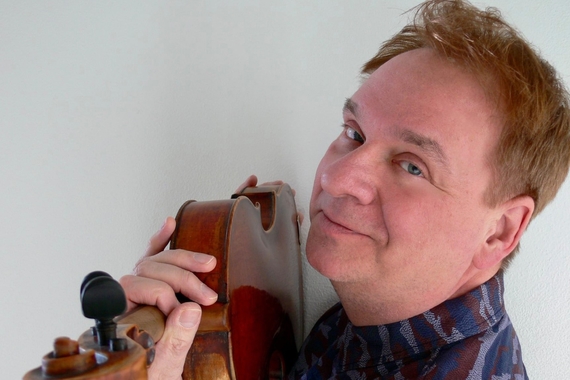Reflecting on Indian Orthodox Christian Music Traditions

Graduate teaching assistant Vinay Thomas will be conducting the upcoming University Singers Broadcast Performance (https://z.umn.edu/6von) airing Saturday, May 8 at 7:30 pm. The pre-recorded performance will feature music from Indian Orthodox Christian liturgical tradition in a reflective program. We spoke with Thomas about the program repertoire, including the two pieces he arranged, as well as his experience conducting during COVID-19.
What has your experience been like choral conducting this year?
Returning to in-person choral activity has been both surreal but also anti-climatic in some ways. While it took some time to adjust to the new normal of socially distanced singing, I feel that everyone was so eager to get back to singing that we really all poured our heart into the project and hit the ground running.
Tell us more about the theme of this performance.
This recital aims to explore themes of Orthodox musical practice through exploring pieces from various Orthodox composers and traditions. When performed in its entirety, the recital evokes a unique atmosphere that is very characteristic of the Indian Orthodox services I grew up participating in. I was raised in a liturgical tradition that was filled with singing and chanting from virtually all participants in the worship space, and this high level of musicality served to envelop all who were there into a meditative state of spirituality. The program also ties into my Masters Thesis, where I wrote about the musical practices of the Indian Orthodox worship space and how they inform us about creating an atmosphere of active participation and engagement in the choral space. Therefore, through this project I explored the nature of my relationship as the conductor with the chorus and redefined what it means to participate in a chorus.
What do you want the audience to look for in the performance?
Everyone is welcome to engage in this performance in any way they find suitable. The program features a good variety of languages, musical textures, vocal colors, and energies. Some pieces may be more familiar to some and others will be brand new, but I believe there is something for everyone.
What inspired you to create the arrangements of Anpudayone nin vathil and Nanniyode njan?
In my first semester at UMN, I had the opportunity to arrange Nanniyode njan for one of the ensembles I was teaching. I posted the concert recording and the video went viral, reaching about 30,000 views online in a week! Now, over a year later, I wanted to expand on that experience for my recital by incorporating more thorough arrangements. Both pieces are part of an Indian Christian tradition that is almost 2000 years old, and are in the south Indian language of Malayalam. Thus, I wanted to share my experiences of worship and teach students a new language through the introduction of these arrangements. While Nanniyode njan is a very well known praise and worship song known by all Indian Christians (similar to Amazing Grace in western Christianity), Anpudayone nin vathil is more specific to the Indian Orthodox liturgy. Including both arrangements served as a good balance to the other repertoire in my recital program.
What is your favorite piece that you will be conducting and why?
John Tavener’s Svyáti is truly the centerpiece of my entire recital. Tavener composed the work as a dialogue between the chorus and a solo cello that represents the Ikon of Christ. Connecting the cello and chorus is a constant organ drone that both grounds the sound space and puts both performers and listeners into a meditative space. Of all the works in the program, this piece best encapsulates the beauty of Orthodox liturgical singing, even though the incorporation of cello ironically prevents it from being used in worship.
Anything else you want to share?
I would like to thank my professors, the UMN School of Music staff, my graduate TA colleagues, and all the students who helped to make my recital a possibility. It is a blessing to have wonderful facilities and support from so many people to overcome the uncertainties of the pandemic. While the final product of a recorded recital ended up being a great success, I truly believe that the most important of the process was the journey toward creating those recordings. This includes all the ups and downs of weekly rehearsals, planning, collaboration, problem-solving, etc. I would like to selfishly add that I likely learned the most during this process compared to everyone else, and I owe the entirety of this project’s success to those that guided me.
For more information about the University Singers’ Broadcast Performance, please visit: https://z.umn.edu/6von. The program is available at z.umn.edu/6vog.



